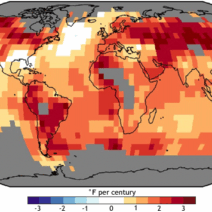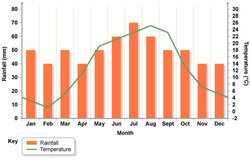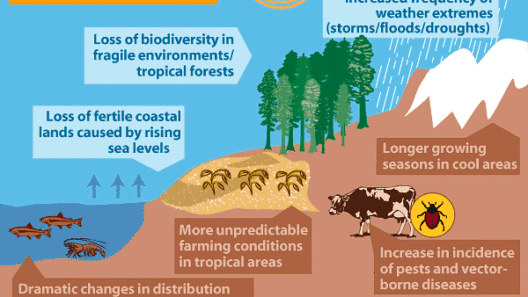Temperate forests, often characterized by their remarkable beauty and functional ecosystems, embody a unique climate that distinguishes them from other biomes around the globe. The climate within temperate forests is defined by a confluence of moderate temperatures, seasonal variations, and abundant precipitation, which collectively facilitate a rich tapestry of biodiversity. This arduous interplay among climatic components invites both reflection and admiration from environmentalists and nature enthusiasts alike.
Geographically, temperate forests are predominantly located between the tropics and polar regions, finding their homes in areas characterized by a moderate climate. This region encompasses parts of the United States, Europe, and East Asia. One of the most salient features of temperate forests is their balance of four distinct seasons: spring, summer, autumn, and winter. Each season contributes uniquely to the ecological dynamics, influencing the flora and fauna that inhabit these lush landscapes.
Spring unveils a awakening; trees begin to bud and a vibrant palette of wildflowers emerges. Temperatures during this season are mild, encouraging a gradual resurgence of life after the dormancy of winter. The moisture from spring rains replenishes the soil and invigorates waterways, thus supporting the nuanced symbiosis that permeates these ecosystems. The photosynthetic activity increases, and the forest bursts into life with a cacophony of sounds as birds return from their migrations, and insects re-emerge. This resurgence signals a critical moment in the life cycle of countless species, setting the stage for the growth and reproduction that peaks during summer.
Summer introduces a humid warmth that is particularly conducive to growth. The days are long, with abundant sunshine that fuels photosynthesis, leading to lush foliage. The flora during this season is in its prime, reaching towering heights and creating a dense canopy that provides essential habitats for various organisms. Below this verdant cover, the understory flourishes, home to an array of shrubs, young trees, and ferns. This layered structure not only enhances biodiversity but also plays a pivotal role in regulating microclimates and sustaining the health of the ecosystem.
As summer wanes, autumn manifests a stunning metamorphosis. The climate begins to cool, and deciduous trees transition through an exhilarating display of colors, painting the landscape in hues of amber, crimson, and gold. This change is driven by a decrease in daylight and cooler temperatures, which trigger a cessation of chlorophyll production in the leaves. Particularly fascinating is the way deciduous trees prepare for the winter months by conserving resources, thereby redirecting energy to their roots. The shedding of leaves further enriches the forest floor, contributing to soil nutrients and enhancing the overall fertility of the ecosystem.
Winter, often seen as a stark season, introduces a rugged beauty to temperate forests. While many organisms retreat into hibernation or migration, the climate offers its own unique adaptations. Some species have evolved to thrive in these colder months, displaying remarkable adaptations that allow them to survive with limited resources. The cold weather can serve as a natural reset, preserving the integrity of ecosystems and facilitating future regeneration. Snow can insulate the forest floor, protecting soil organisms and seeds from harsh temperatures while also contributing to the hydrological cycle as it melts.
The balanced climate of temperate forests, molded by these seasonal shifts, is a cornerstone for the rich biodiversity that flourishes within. The variability in temperature and moisture creates niches that support a multitude of organisms—ranging from towering hardwoods like oaks and maples to the myriad of animal species that reside within these habitats. Each organism plays an integral role within the food web, showcasing a complex interrelationship that emphasizes the importance of maintaining ecological integrity.
An interesting observation arises when considering how these balanced seasons have shaped evolutionary strategies among species. For instance, many animals exhibit seasonal behaviors such as migration and hibernation, allowing them to adapt to the availability of resources through the year. Fungi and microorganisms play vital roles in nutrient cycling, breaking down organic matter in autumn and contributing to soil health. These intricate interactions lie at the heart of the ecosystem’s resilience.
Moreover, temperate forests are a vital carbon sink in the global climate context. They sequester significant amounts of carbon dioxide, mitigating the impacts of climate change. The health of these forests has broad implications; their preservation is crucial not just for biodiversity but also for the services they provide to humanity, such as clean air and water, recreation, and raw materials. The depletion of these forests through deforestation and climate disruption poses a profound risk, one that demands urgent attention and action.
In conclusion, the climate of temperate forests, with its balanced seasons and diverse life forms, encapsulates a stunning demonstration of nature’s prowess. Each season plays a pivotal role in sustaining a myriad of species that have co-evolved in a delicate balance. This intricacy highlights the importance of environmental stewardship. As stewards of the planet, it is essential to champion the preservation of these ecosystems—recognizing that their health directly contributes to the resilience of our planet as a whole.








